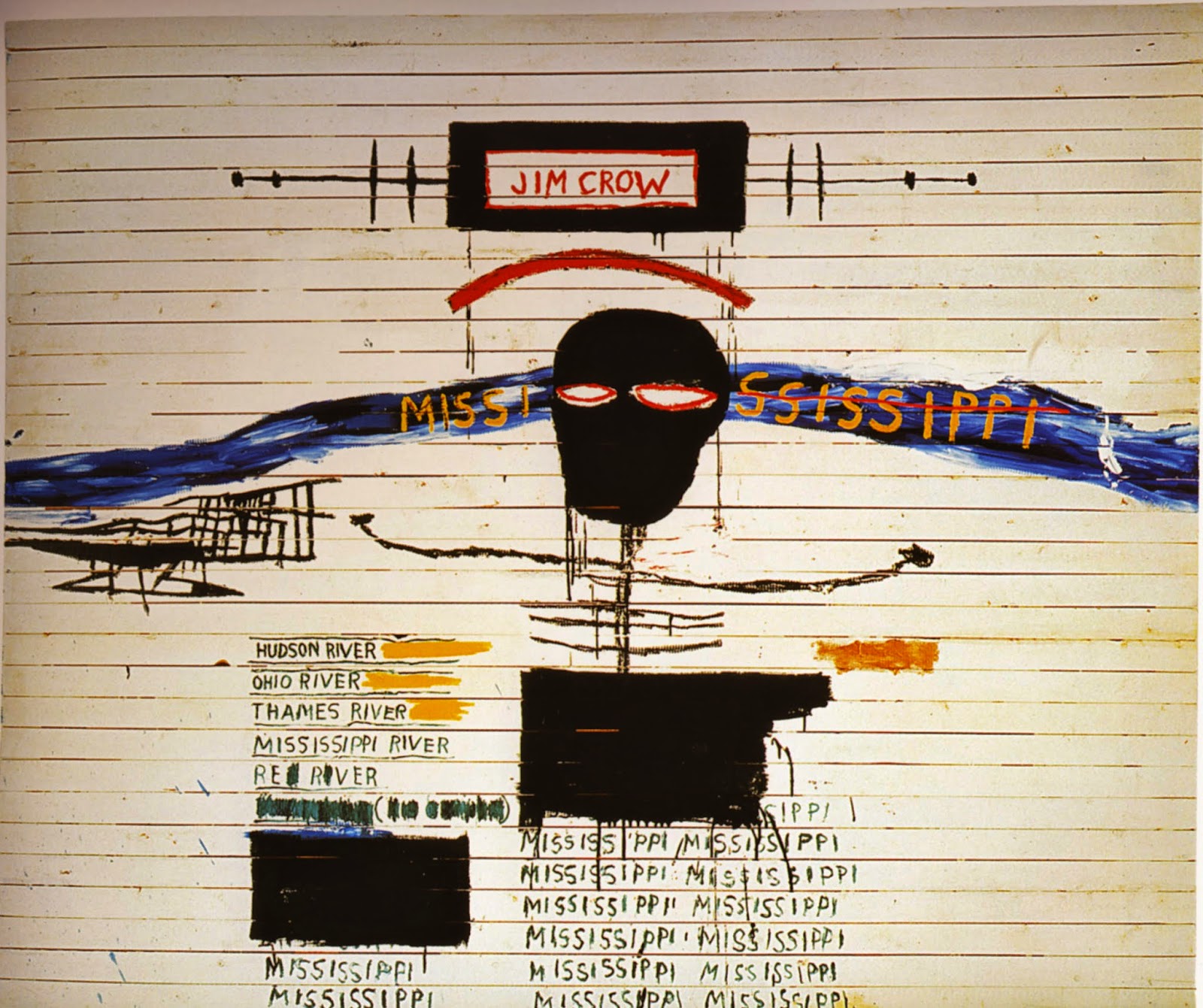Jean Michel Basquiat
I’ve just completed reading ‘Basquiat- Or How To Make a
Killing In Art’ by Phoebe Hoban. Written
in 1998, ten years after his death from a drugs overdose aged just 27, it
charts the meteoric rise and fall of New York painter Jean Michel Basquiat set
against the backdrop of the gross capitalist excess of the Eighties art world;
a time when art really collided with the world of commerce and became just
another consumable commodity. Artists like Basquiat became overnight stars, but
at a heavy cost; selling their work at astronomical prices, but not as much as
the vulture like dealers they worked with who would then sell the work on again
for double or treble the price to the ‘nouveau riche’ collectors, who sprang up
at this time, who would then sell the paintings off at auction for grossly
inflated prices. It became a deadly vampire like game that all famously came
crashing down in 1989, destroying many artists careers, but a game which had a
lasting impact on how we view and experience art today. Charles Saatchi
continued many of it’s excessive practices with his own art collection in the
Nineties, launching many careers and destroying others in the same way, when he
would sell off wholesale a particular artist’s work that he had been collecting
and subsequently kill off the market for it.
It’s been a compelling read, which I’ve found myself picking
up at any given opportunity. Hoban fills the book with a high level of fascinating
detail where we are drawn into the seemingly outlaw world, or a seemingly
private, closed universe, of shark-like dealers (sharks and vampires! I’m piling this on!) such as Larry ‘Go Go’ Gagosian,
Bruno Bischofberger and Mary Boone, where it is all about the money and total
free market capitalism at its unchecked worst. I’ve been shocked by much of it,
but also found much of it very sobering: this is the world of art reduced to
the bottom dollar and nothing else. Any noble ideas of its value beyond that
seem laughable. Basquiat himself,
exploited mercilessly as he destroys his body and soul with an extraordinarily
large amount of Class A drugs, seems lost like an angry child; making paintings
of ever diminishing returns as he is trapped in a cycle of producing work for
the big queue of collectors waiting impatiently at the door, to feed his desire
to be famous and to feed his terrible heroin habit, heading into oblivion. It’s
a sad story.
There is not that much discussion about the paintings made
by Basquiat during the story. This comes a bit later after his death where his
‘legacy’ is reflected upon. The general consensus, lead by critics like the
often pompous, Robert Hughes, is that the early work that made him famous is
the best, with what followed repetitious and increasingly facile and that he
never developed as an artist. I agree with this point of view about the early
work etc. but with a career so short, and no art school background, and the
trappings he quickly found himself in at a very young age, I don’t think he
ever really had the chance to develop.
There is an undeniable raw energy about the work, combined with many
very sophisticated ideas about colour, the painted and drawn mark, and the
combination of text and image. The paintings can be full of unexpected passages
and surprises, crammed with ideas and references. They can also be sparse and
terse, angry and spooky, with their cryptic words against the simplest of
grounds. They can be very poetic, and also reminiscent of a more street smart Cy Twombly.
Having finished the book, I found myself digging out
‘Basquiat’ the movie made by artist Julian Schnabel, a painter I have never
really seen the appeal of, unlike Basquiat. Schnabel was one of Basquiat’s
peers in this incestuous New York art world of the Eighties, who has managed
his own career much more successfully. I’ve seen the film several times, and
having finished the book, I thought that film seems a pretty lame attempt to
capture that world. However, on watching it again, I appreciated what a great
and sly film it is, where so many of the issues discussed in Hoban’s book are
worked through in the little asides of dialogue between David Bowie’s Andy
Warhol (not sure about that casting!), and Dennis Hopper’s Bruno Bischofberger
(which seems very good), or Jean Michel’s friend, a composite of many people,
played brilliantly by the charismatic Benecio Del Toro. There is a two minute
scene where they are playing basketball in the street, where Del Toro explains
the whole art world Basquiat is trying to enter and will find himself quickly
trapped in a few neat sentences. I loved it when Warhol accused Jean Michel of
not spending much time on any of the painted postcards that he is trying to
sell to him in a restaurant, and Basquiat retorts that other people make
Warhol’s so he spends even less time. At which point, Hopper’s Bischofberger
quietly states that it is not about how much time you spend on something, but
how much you can sell it for. That sums it all up neatly. This painting below 'Riding With Death' is a brilliant and prophetic late painting by Basquiat, completed a few months before his death.








No comments:
Post a Comment